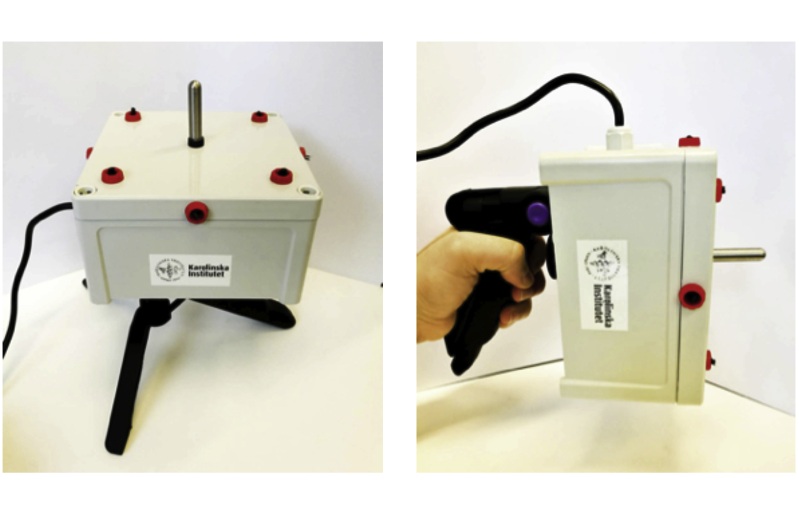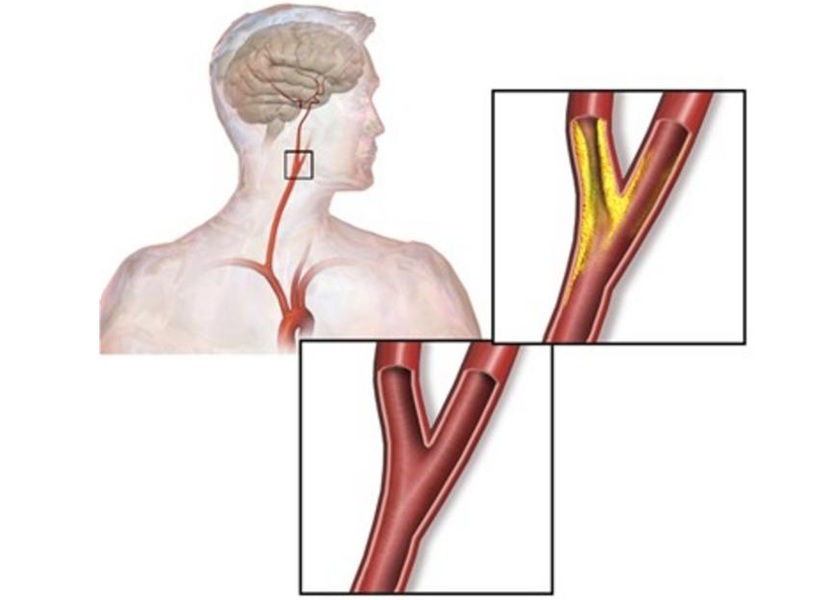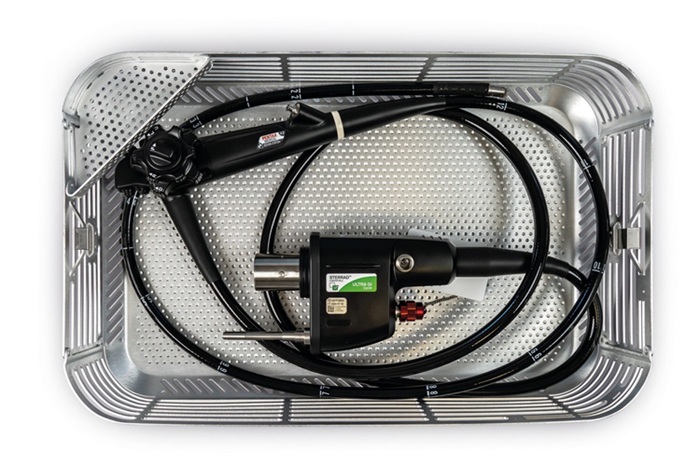New Rapid COVID-19 Test Beats ELISA Method in Identifying SARS-CoV-2 Antibodies in Blood Within Just 12 Minutes
|
By HospiMedica International staff writers Posted on 10 Feb 2021 |
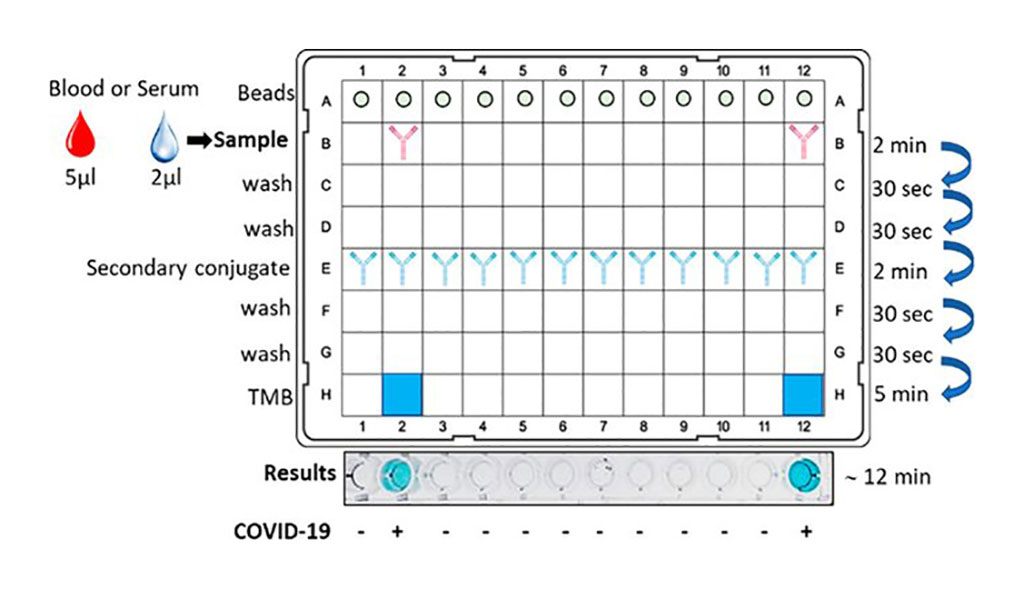
Image: New Rapid COVID-19 Test Beats ELISA Method in Identifying SARS-CoV-2 Antibodies in Blood within Just 12 Minutes (Photo courtesy of American Chemical Society)
A new rapid COVID-19 test to detect coronavirus antibodies beats the enzyme linked immunosorbent assay (ELISA) method in delivering results within just 12 minutes, marking a milestone in the development of immunological diagnostics.
An international research team involving the University of Paraná (Paraná, Brazil) and the University of Tübingen (Tübingen, Germany) has developed the new rapid test that can reliably identify COVID-19 antibodies in the blood within minutes. The new process is based on a simple measuring principle, making it easy to carry out without expensive instruments and is therefore, suitable for use at mobile testing centers or by laboratories in less economically developed regions. The new diagnostic method is also far faster than the ELISA procedure, which for decades has been seen as the gold standard for laboratory diagnosis of antibodies.
The new test is based on magnetic nanoparticles that are coated with viral antigens. To conduct the test, blood serum or blood is applied to the test surface. After roughly two minutes, the nanoparticles are washed and treated with a developer reagent. If the blood sample displays antibodies to coronavirus, a color change occurs. While the traditional ELISA test produces results after about three hours, study results show that the new method only takes 12 minutes. Positive and negative results can be established simply with the naked eye, and by using additional instruments, such as a microplate reader, the precision of the test can be further increased. The total response time is 15 times shorter than that of the classic ELISA test, which means that hundreds of samples can be tested in just a few hours.
In addition, the study shows that the new technology can also be applied to the serological diagnosis of other diseases. There are no reports in research literature on an immunology test for COVID-19 that delivers data as quickly, as precisely and above all as cheaply. The researchers believe that it will be possible to offer the new test at a comparable price to the ELISA test in future.
“Only a small sample is needed for the test: a single drop that contains two microliters of serum is sufficient,” said the study’s lead author, Professor Luciano F. Huergo from the University of Paraná: “It’s also possible to use whole blood, in other words the separation of soluble blood components that is normally necessary can be omitted. It isn’t absolutely necessary to have a fully-equipped laboratory or use special equipment to carry it out.”
“Another advantage over the ELISA procedure is that the color result of our new procedure is directly proportional to the concentration of antibodies,” added Huergo. “In other words, the new method delivers data on the quantity of antibodies and not just whether any are present.”
Related Links:
University of Paraná
University of Tübingen
An international research team involving the University of Paraná (Paraná, Brazil) and the University of Tübingen (Tübingen, Germany) has developed the new rapid test that can reliably identify COVID-19 antibodies in the blood within minutes. The new process is based on a simple measuring principle, making it easy to carry out without expensive instruments and is therefore, suitable for use at mobile testing centers or by laboratories in less economically developed regions. The new diagnostic method is also far faster than the ELISA procedure, which for decades has been seen as the gold standard for laboratory diagnosis of antibodies.
The new test is based on magnetic nanoparticles that are coated with viral antigens. To conduct the test, blood serum or blood is applied to the test surface. After roughly two minutes, the nanoparticles are washed and treated with a developer reagent. If the blood sample displays antibodies to coronavirus, a color change occurs. While the traditional ELISA test produces results after about three hours, study results show that the new method only takes 12 minutes. Positive and negative results can be established simply with the naked eye, and by using additional instruments, such as a microplate reader, the precision of the test can be further increased. The total response time is 15 times shorter than that of the classic ELISA test, which means that hundreds of samples can be tested in just a few hours.
In addition, the study shows that the new technology can also be applied to the serological diagnosis of other diseases. There are no reports in research literature on an immunology test for COVID-19 that delivers data as quickly, as precisely and above all as cheaply. The researchers believe that it will be possible to offer the new test at a comparable price to the ELISA test in future.
“Only a small sample is needed for the test: a single drop that contains two microliters of serum is sufficient,” said the study’s lead author, Professor Luciano F. Huergo from the University of Paraná: “It’s also possible to use whole blood, in other words the separation of soluble blood components that is normally necessary can be omitted. It isn’t absolutely necessary to have a fully-equipped laboratory or use special equipment to carry it out.”
“Another advantage over the ELISA procedure is that the color result of our new procedure is directly proportional to the concentration of antibodies,” added Huergo. “In other words, the new method delivers data on the quantity of antibodies and not just whether any are present.”
Related Links:
University of Paraná
University of Tübingen
Latest COVID-19 News
- Low-Cost System Detects SARS-CoV-2 Virus in Hospital Air Using High-Tech Bubbles
- World's First Inhalable COVID-19 Vaccine Approved in China
- COVID-19 Vaccine Patch Fights SARS-CoV-2 Variants Better than Needles
- Blood Viscosity Testing Can Predict Risk of Death in Hospitalized COVID-19 Patients
- ‘Covid Computer’ Uses AI to Detect COVID-19 from Chest CT Scans
- MRI Lung-Imaging Technique Shows Cause of Long-COVID Symptoms
- Chest CT Scans of COVID-19 Patients Could Help Distinguish Between SARS-CoV-2 Variants
- Specialized MRI Detects Lung Abnormalities in Non-Hospitalized Long COVID Patients
- AI Algorithm Identifies Hospitalized Patients at Highest Risk of Dying From COVID-19
- Sweat Sensor Detects Key Biomarkers That Provide Early Warning of COVID-19 and Flu
- Study Assesses Impact of COVID-19 on Ventilation/Perfusion Scintigraphy
- CT Imaging Study Finds Vaccination Reduces Risk of COVID-19 Associated Pulmonary Embolism
- Third Day in Hospital a ‘Tipping Point’ in Severity of COVID-19 Pneumonia
- Longer Interval Between COVID-19 Vaccines Generates Up to Nine Times as Many Antibodies
- AI Model for Monitoring COVID-19 Predicts Mortality Within First 30 Days of Admission
- AI Predicts COVID Prognosis at Near-Expert Level Based Off CT Scans
Channels
Critical Care
view channel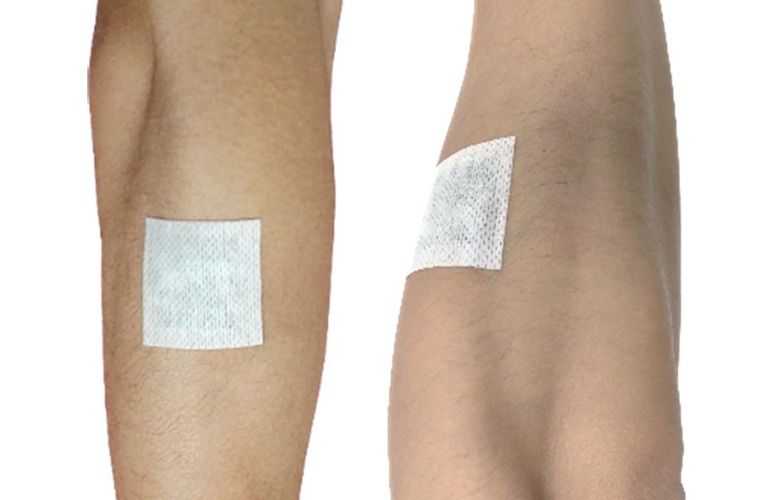
Highly Sensitive On-Skin Sensing Monitor Detects Vitamin B6 and Glucose in Sweat
Vitamin B6 plays a crucial role in immune function and brain health, yet patients with chronic conditions such as diabetes often experience deficiencies that can cause irritability, depression, anemia,... Read more
Artificial Intelligence Revolutionizing Pediatric Anesthesia Management
Administering anesthesia to children poses unique challenges, as their anatomy varies significantly even among patients of the same age. Misjudging the correct breathing tube size or failing to detect... Read moreSurgical Techniques
view channel
Superior Orthopedic Implants Combat Infections and Quicken Healing After Surgery
Implant-associated infections remain one of the biggest challenges in orthopedic surgery, leading to device failure, prolonged recovery, and increased antibiotic resistance. Conventional implant materials... Read more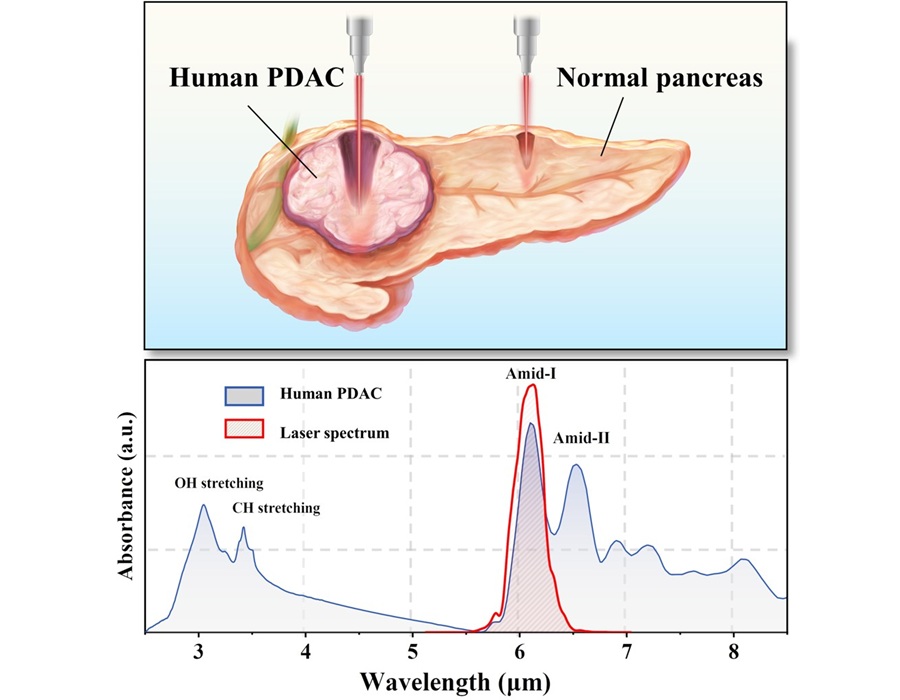
Laser-Based Technique Eliminates Pancreatic Tumors While Protecting Healthy Tissue
Pancreatic ductal adenocarcinoma (PDAC) is the most common and deadliest form of pancreatic cancer, ranking as the third leading cause of cancer-related deaths worldwide. Current tumor ablation techniques—using... Read morePatient Care
view channel
Revolutionary Automatic IV-Line Flushing Device to Enhance Infusion Care
More than 80% of in-hospital patients receive intravenous (IV) therapy. Every dose of IV medicine delivered in a small volume (<250 mL) infusion bag should be followed by subsequent flushing to ensure... Read more
VR Training Tool Combats Contamination of Portable Medical Equipment
Healthcare-associated infections (HAIs) impact one in every 31 patients, cause nearly 100,000 deaths each year, and cost USD 28.4 billion in direct medical expenses. Notably, up to 75% of these infections... Read more
Portable Biosensor Platform to Reduce Hospital-Acquired Infections
Approximately 4 million patients in the European Union acquire healthcare-associated infections (HAIs) or nosocomial infections each year, with around 37,000 deaths directly resulting from these infections,... Read moreFirst-Of-Its-Kind Portable Germicidal Light Technology Disinfects High-Touch Clinical Surfaces in Seconds
Reducing healthcare-acquired infections (HAIs) remains a pressing issue within global healthcare systems. In the United States alone, 1.7 million patients contract HAIs annually, leading to approximately... Read moreHealth IT
view channel
Printable Molecule-Selective Nanoparticles Enable Mass Production of Wearable Biosensors
The future of medicine is likely to focus on the personalization of healthcare—understanding exactly what an individual requires and delivering the appropriate combination of nutrients, metabolites, and... Read moreBusiness
view channel
Philips and Masimo Partner to Advance Patient Monitoring Measurement Technologies
Royal Philips (Amsterdam, Netherlands) and Masimo (Irvine, California, USA) have renewed their multi-year strategic collaboration, combining Philips’ expertise in patient monitoring with Masimo’s noninvasive... Read more
B. Braun Acquires Digital Microsurgery Company True Digital Surgery
The high-end microsurgery market in neurosurgery, spine, and ENT is undergoing a significant transformation. Traditional analog microscopes are giving way to digital exoscopes, which provide improved visualization,... Read more
CMEF 2025 to Promote Holistic and High-Quality Development of Medical and Health Industry
The 92nd China International Medical Equipment Fair (CMEF 2025) Autumn Exhibition is scheduled to be held from September 26 to 29 at the China Import and Export Fair Complex (Canton Fair Complex) in Guangzhou.... Read more












